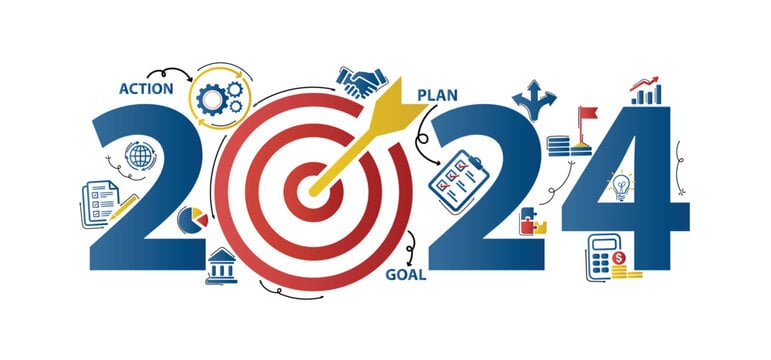New Year, New Financial Beginnings: Financial Planning for the Year Ahead

Assessing Your Financial Situation
The first step in financial planning is to assess your current financial situation. This means reviewing your income, expenses, debts, and savings. Create a detailed budget that accounts for all your monthly expenditures and any irregular expenses that may arise throughout the year. Understanding where your money goes each month is crucial to identifying potential savings and areas where you can cut back.
Setting Financial Goals
Once you have a clear picture of your finances, it's time to set specific, measurable, achievable, relevant, and time-bound (SMART) financial goals. These could include saving for a down payment on a house, paying off credit card debt, building an emergency fund or saving for retirement. Remember to prioritize your goals and focus on what's most important to you and your family.
Creating a Savings Plan
A savings plan is an essential component of financial planning. Determine how much you need to save to reach your goals and set up automatic transfers to your savings account to ensure you're consistently setting money aside. Consider different savings vehicles, such as high-yield savings accounts, certificates of deposit (CDs), or individual retirement accounts (IRAs), to maximize your returns.
Investing Wisely
Investing can be a powerful way to grow your wealth over time. If you're new to investing, start by educating yourself on the basics of stocks, bonds, exchange traded funds (ETF’s), and other investment options. It's important to understand the risks and potential rewards associated with each type of investment. Consider seeking advice from a financial advisor to help you create a diversified investment portfolio that aligns with your risk tolerance and financial goals.
Managing Debt
Debt can be a significant obstacle to achieving financial freedom. In the new year, make a plan to tackle your debt. Consider strategies such as the debt snowball method, where you pay off debts from smallest to largest. This method creates victories along the way and has proven to be more sustainable, the key is to remain consistent and disciplined in your approach.
Planning for Retirement
Retirement planning is a critical aspect of financial planning, regardless of your age. The new year is a great time to review your retirement accounts, such as 401(k)s, IRAs, annuities, etc. and ensure you're contributing enough to meet your long-term goals. It is critical to have personalized written retirement plan that accounts for the accumulation phase of your nest egg as well as the distribution phase of your plan, and have this plan account for and reduce the main six retirement risks (sequence of returns risk, longevity risk, withdraw risk, inflation risk, taxation risk and market risk)
Protecting Your Assets
Insurance is an often overlooked but important part of financial planning. Review your insurance policies, including health, life, disability, and property insurance, to ensure you have adequate coverage. As your life circumstances change, your insurance needs may change as well, so it's important to keep your policies up to date.
Conclusion
Financial planning for the new year is about taking control of your finances and setting yourself up for a secure future. By assessing your financial situation, setting goals, creating a savings plan, investing wisely, managing debt, planning for retirement, and protecting your assets, you can build a strong financial foundation for the year ahead and beyond. Remember, the most important step is to start. With dedication and discipline, you can achieve your financial goals and enjoy a prosperous new year and beyond.
Contact me at [email protected]
#RetireHappy #retirementplanning #Financial Planning

Retirement Planning






